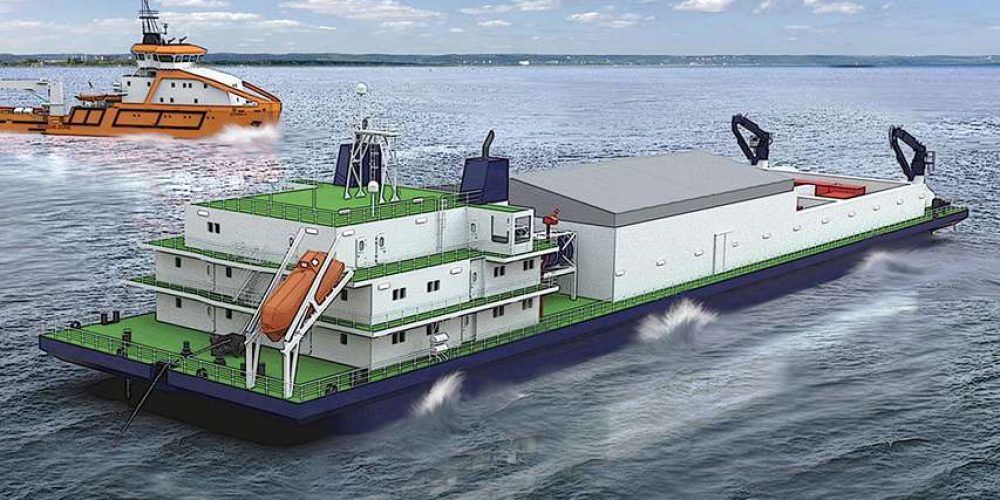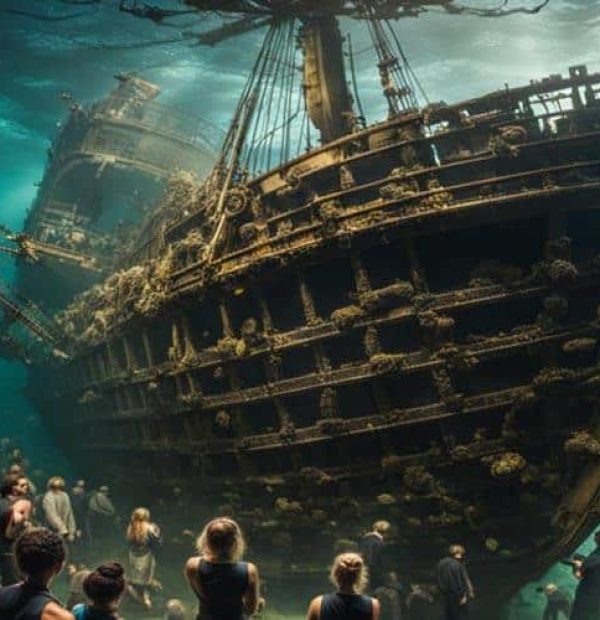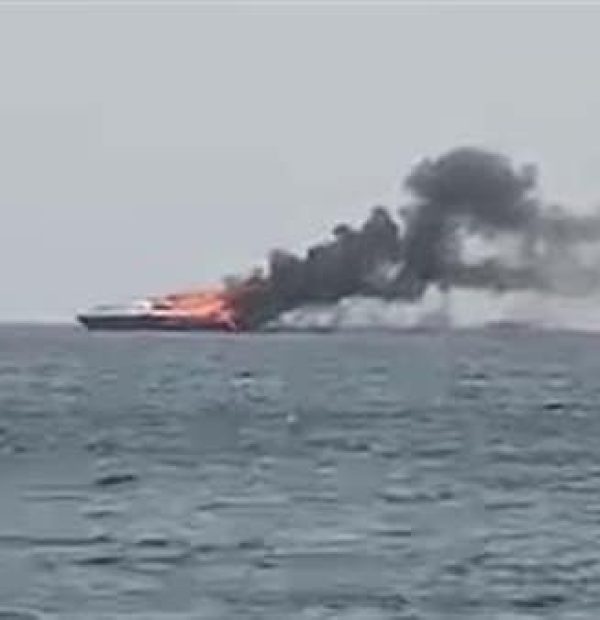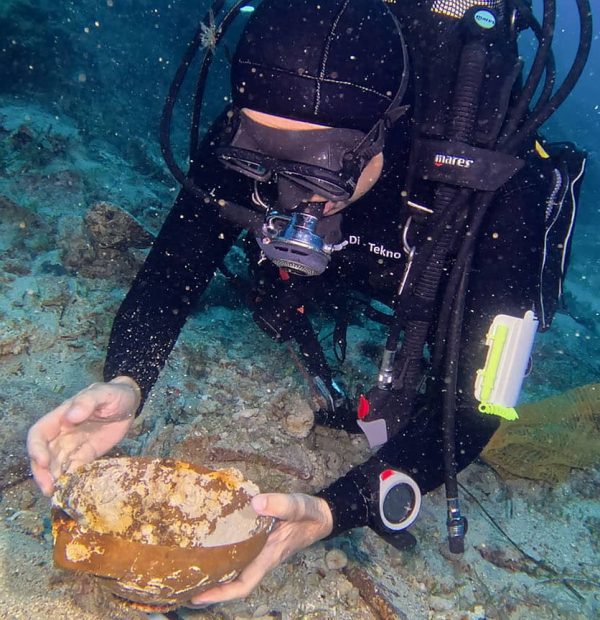Monday, 22 April 2024
Menu

Remontowa Shipbuilding and RMDC, a ship design and consulting company, also part of the Remontowa Holding capital group, together with partners from Poland and Sweden, present a comprehensive concept for solving the problem of cleaning the Baltic seabed, also from hazardous substances that are remnants of World War II. The proposal includes both a specialised vessel and a method for cleaning the seabed.
Clearing the Baltic seabed of the dangerous remains of the First and Second World Wars is an increasingly urgent task. This matter is extremely important for maritime economy and coastal safety of the Polish part of the Baltic Sea. The progressive corrosion of munitions will result in more and more dangerous material being discharged directly into the sea. In turn, currents on the Baltic will direct this dangerous material directly onto Polish beaches.
The measures and international programmes undertaken to date make it possible to determine only partially the location of hazardous materials and their condition. However, we are far from being able to fully identify the situation on the seabed of the Baltic and to map all the locations of this danger in Polish waters. This requires a new approach, allowing us to act more quickly, more extensively and more effectively, as time is not a supporting factor. Every year means deterioration in the condition of the bunkers and containers in which chemical weapons are stored. Until now, there has been no comprehensive concept of how to dispose of this lying danger.
In view of these risks, Remontowa Shipbuilding S.A. together with Remontowa Marine Design & Consulting Sp. z o.o., Ibcol Sp. z o.o. and Dynasafe Demil Systems AB of Sweden, took steps to develop a technical concept for a hazardous munitions disposal unit and the process of neutralising the excavated munitions and explosives.
Cooperation between a Polish shipyard and a company specialising in the construction of ammunition disposal lines brings a solution to the problem. In this experienced group, it was possible to create the functional principles for a sea barge. It allows for comprehensive and safe disposal of hazardous materials from the bottom of the Baltic Sea. Both classic ammunition and chemical weapons.
The basic premise of the concept developers is to fully implement the hazardous munitions disposal process at sea. Disposal of hazardous materials on land poses a greater risk due to handling and transportation. Disposal at sea will shorten the entire path from receiving the object to its disposal. It also guarantees the highest level of safety for the Polish coast.
The concept assumes the need to improve reconnaissance and surveillance of places where hazardous materials are deposited on the bottom. This requires support with the forces of maritime administration units, Navy and other institutions. Taking into account the increasing use of the seabed, it seems reasonable to create the national competence to supervise the seabed of the Polish part of the Baltic Sea, similar to the supervision of building installations or supervision of roads and motorways. Taking into account the above, it seems advisable to develop the ship’s potential for observation and surveillance of the seabed, including detection of hazardous materialsto catalogue them precisely and then undertake their removal.
Simply pre-loading the ammunition into the recovery containers while still underwater and preparing the underwater cache for collection are tasks that appear to be achievable with Polish resources, both from groups Navy divers-minersand specialist diving service providers. However, this requires an increase in capacity, through the provision of specialist robots and heavy suits, which eliminate the diver ‘s contact with the external environment and hazardous substances.
The final and key element of the whole process is a modular disposal line for munitions and chemical weapons. In the presented concept, it has been set on a double-hulled sea barge with adjustable draught. This design ensures a very high level of stability for the vessel. It also provides adequate space for the reprocessing line and the necessary solutions for the safety of the reprocessing process. The modular disposal line from Dynasafe Demil Systems AB, mounted on a double-hull unit designed by Remontowa Marine Design & Consulting Sp. z o.o., is a solution that has been proven through numerous long-term tests and in practical operation. Reaching for proven installations seems to be a necessary action to ensure the highest safety of the entire operation.
The number of entities in the world with ammunition and chemical weapons disposal line technology is very limited. The solution used in the presented concept was applied in countries such as the United States, France, Germany, Japan, Italy and China. References, proven technology and, consequently, the safety of installations are the key factors in this case, eliminating untested solutions. In this segment of technology, there is no room for errors or faults that require correction.
A key component of the installation is the static armoured combustion chamber SDC, operating at 550°C. The high temperature safely burns hazardous material from both conventional and chemical weapons and munitions. The SDC can withstand detonation, although in most cases the munitions will not detonate, only burn out. The safety of the operation is overseen by several levels of security solutions. These include a gas purification system to ensure that operations comply with applicable environmental standards.
The concept developed by a group of specialists led by Remontowa Shipbuilding assumes the maximum possible participation of domestic industry. The ability to design and build vessels to monitor the seabed and take on hazardous materials is within the competence of the Polish shipbuilding industry. So is the ability to build a vessel – a sea barge with a disposal installation. Solutions to units for the offshore disposal of hazardous materials may also become an attractive subject for export of technologies from the domestic shipbuilding industry. The crews of these units, once trained in the use of the ammunition and chemical weapons disposal system, could also be Polish. Similarly, the underwater part of the process of taking hazardous materials for disposal can be performed by Polish underwater service providers.
The concept presented to the government at the moment requires functional fine-tuning between the contracting authority and the contractor. It is also necessary to take a decision on the implementation of the programme. The measures taken by the government and Polish parliamentarians in the international arena are to be welcomed. It is about the allocation of financial means by the EU to get rid of this burning problem from the seas of Europe.
The undertaking of the programme by the Polish government, with co-financing from European funds, would make such an extensive potential an attractive solution for national needs as well as those of other countries in the Baltic region.
The design of the unit, a sea-going barge with a conventional and chemical ammunition disposal line, can be exported to other sea areas. Demand for this type of unit exists in Italy, France, Belgium and the Black Sea countries.
length – 105 m
width – 24 m
disposal – approximately 1250 kg of ammunition per day
crew: approximately 40 persons
Photo: Press materials










Welcome to DIVERS24.COM, your daily source of scuba news, freediving, scuba diving information, and equipment reviews. Our comprehensive coverage of the dive industry from A to Z provides you with all the latest scuba news, training updates, underwater photography tips, and everything else related to scuba diving. Whether you’re a beginner or an experienced diver looking for more knowledge about scuba gear or techniques – we’ve got it covered! With our in-depth articles written by experienced divers who have been there and done that, you are sure to find exactly what you need here at Divers24.com. Dive into scuba news today!
Underwater Media Sp. z o.o.
Szafarnia 11/F8,
80-755 Gdansk, Poland
Welcome to DIVERS24.COM, your daily source of scuba news, freediving, and scuba diving information. Sign in for a weekly news update and discount coupons for dive gear and apparel.
@2023 - underwatermedia.pl. All Right Reserved. Designed and Developed by Tworzenie stron internetowych Gdansk

The Divers24 portal is currently the largest online medium treating diving in Poland. Since 2010 we have been providing interesting and important information from Poland and around the world on all forms of diving and related activities.
Contact us: info@divers24.com